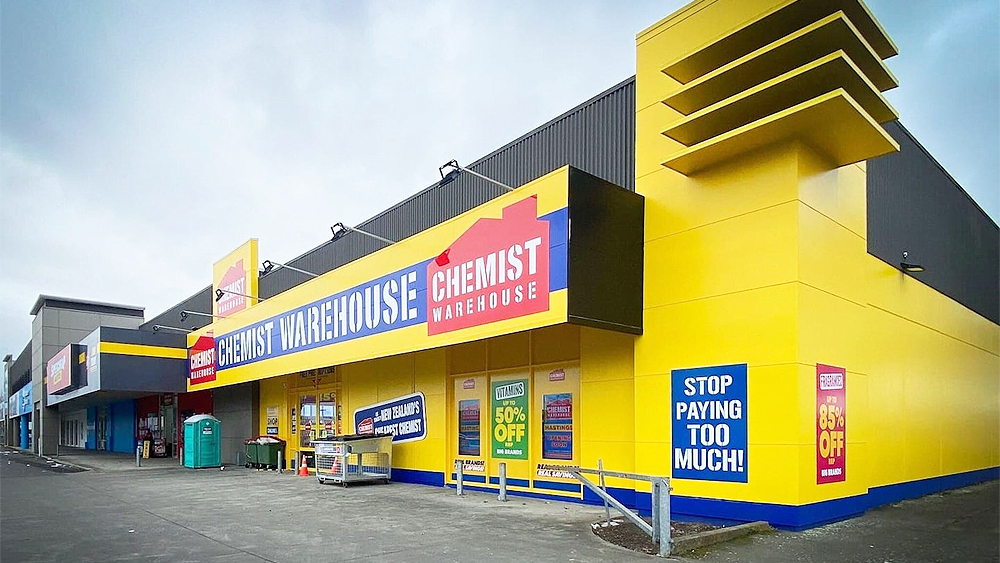
We recently saw the latest chapter in one of Australia’s greatest business success stories. The group behind the Chemist Warehouse pharmacy chain became part of a public company listed on the Australian stock exchange.
In a change from the usual IPO route, the Chemist Warehouse went public via a reverse takeover by Sigma Healthcare. In late 2023, Sigma was a healthcare company with a market capitalisation of just a few billion dollars. This month, after completing a merger with the much larger Chemist Warehouse group, Sigma now has a market cap of around A$34 billion.
The major shareholders of the new Sigma are now the multi-billionaire co-founders of the Chemist Warehouse, Mario Verrocchi and the brothers Jack and Sam Gance.
The merger Scheme Booklet describes the Chemist Warehouse as ‘a leading Australian retail pharmacy franchisor’ and the owner of the ‘Chemist Warehouse’ and ‘My Chemist’ pharmacy franchise brands. Its ‘principal activities in Australia consist of the provision of intellectual property and support services as well as the supply of goods to a network of franchised pharmacies’.
In addition, the Chemist Warehouse partly owns 50 retail pharmacies in New Zealand, 10 retail pharmacies in Ireland, and 1 retail pharmacy in Dubai. It also has service agreements with 10 retail pharmacy stores in China.
The remarkable story of the Chemist Warehouse began in Melbourne in 1972 when the Gance brothers set up their first pharmacy. Mario Verrocchi joined them in 1980. The business grew as they began coordinating the buying and marketing activities of other pharmacies. That developed into a franchise model with the business providing a range of services to its franchisees.
The now ubiquitous ‘Chemist Warehouse’ brand first appeared in 2003 and from there the growth was constant and spectacular. Over the next two decades franchised store numbers in Australia grew by about 30 stores a year to more than 600 by 2024.
The first New Zealand Chemist Warehouse pharmacy was opened in 2017. Just eight years later there are now 50 kiwi stores.
The growth in store numbers was accompanied by corresponding growth in profitability. In the 2024 financial year the group recorded net profit after tax of more than $500m.
What’s the secret to the Chemist Warehouse phenomenon? The group’s slogans speak volumes – ‘We love low prices’, ‘We beat everyone’s prices’, ‘Stop paying too much’.
To quote another well-known ‘warehouse’, the Chemist Warehouse is the chemist where ‘everyone gets a bargain’.
Value for money is a winner at any time but has probably been particularly effective in the cost-of-living crisis that has plagued Australia and NZ over the last few years.
The retail pricing of the Chemist Warehouse network, driven in part by the group’s collective buying strength, has been devastating for the profitability of smaller chemists on both sides of the Tasman.
Of course, it takes more than just low prices to generate the scale of success enjoyed by the Chemist Warehouse for a quarter of a century. The business acumen and unrelenting hard work of the Gance brothers and Mario Verrocchi have been essential to creating the pharmacy behemoth that is the Chemist Warehouse.
The backdoor listing now puts a dollar value on all that hard work. According to his Substantial Shareholder notification with the Australian Securities Exchange (ASX), Mario Verrocchi now holds over 2.5 billion shares in Sigma. At the time of writing, Sigma shares are trading at $3.10, giving Verrocchi’s stake a value of nearly $8bn.
The ASX notifications for Sam Gance and Jack Gance reveal stakes of about 1.45 billion shares worth $4.5bn for the former and about 1.58 billion shares worth nearly $5bn for the latter.
According to the Australian Financial Review, there are ten other former Chemist Warehouse shareholders who have emerged with Sigma stakes valued at between $200m and $600m, and 104 franchisees with stakes of between $5m and $25m.
And the original shareholders in Sigma prior to its Chemist Warehouse acquisition can’t complain either. In December 2023, immediately before the merger was proposed, Sigma’s shares were trading at just 80 cents. A little over a year later, they’re more than four times that.
Sigma Healthcare share price Nov 2023 – Feb 2025

Source: Australian Securities Exchange
So where to from here for the Chemist Warehouse, and the Sigma share price?
Numerous factors favouring the pharmacy sector are identified in the Scheme Booklet. These include an ageing population, increased spending on healthcare, innovation in healthcare products, and rising health consciousness. These augur well for the Chemist Warehouse business provided it remains competitive and well managed.
International expansion is obviously another source of potential growth. However, that has its challenges and risks. There are many successful Australian and New Zealand companies that have come unstuck when seeking growth in foreign markets.
It won’t just be business fundamentals that influence Sigma’s share price going forward. Two other factors stand out. The first is what the Chemist Warehouse co-founders do with their huge multi-billion-dollar shareholdings. There are escrow arrangements in place, but they are relatively short term.
The second factor is the extent to which the inclusion of the newly enlarged Sigma in various ASX market indices will create buying pressure as funds that track those indices are forced to purchase the stock. Given its size, Sigma may also warrant inclusion in an international index triggering further buying.
The current share price of $3.10 equates to a market cap of around $34bn for Sigma. That’s nearly 50 times the $700m net profit after tax forecast for the 2027 financial year by three brokers for the Scheme Booklet.
That doesn’t sound cheap. It clearly assumes strong growth for the foreseeable future. But given the track record of the Chemist Warehouse team over decades, that can’t be ruled out.
*Ross Stitt is a freelance writer with a PhD in political science. He is a New Zealander based in Sydney. His articles are part of our 'Understanding Australia' series.

We welcome your comments below. If you are not already registered, please register to comment.
Remember we welcome robust, respectful and insightful debate. We don't welcome abusive or defamatory comments and will de-register those repeatedly making such comments. Our current comment policy is here.